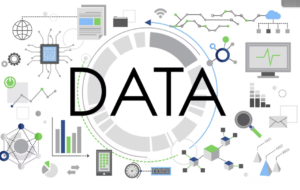Introduction:
In the dynamic landscape of the retail sector, data has emerged as a potent force that shapes strategies, influences customer experiences, and drives innovation. While traditional data sources like sales figures and customer surveys continue to play a vital role, the advent of alternative data has ushered in a new era of insights and possibilities. In this comprehensive exploration, we’ll delve into the transformative impact of alternative data in the retail sector, uncovering its applications, advantages, and the paradigm shift it brings to decision-making processes.

Understanding Alternative Data:
Definition: Alternative data refers to non-traditional information sources that offer unique perspectives and insights into various aspects of business operations. In the retail sector, alternative data goes beyond conventional metrics, incorporating a diverse range of information such as social media sentiment, foot traffic patterns, weather data, and more.
Applications in the Retail Sector:
- Consumer Behavior Analysis: Alternative data provides a nuanced understanding of consumer behavior. Social media interactions, online reviews, and sentiment analysis contribute to a more comprehensive view of customer preferences and trends, helping retailers tailor their offerings to match evolving tastes.
- Supply Chain Optimization: Data from shipping routes, transportation logs, and even satellite imagery can be leveraged for supply chain optimization. This allows retailers to enhance efficiency, reduce costs, and minimize environmental impact.
- Competitor Analysis: Monitoring competitors goes beyond tracking sales figures. Alternative data sources enable retailers to gain insights into competitor pricing strategies, product launches, and consumer reactions, providing a competitive edge in the market.
- Weather-Driven Insights: Weather data plays a crucial role in the retail sector. Understanding how weather patterns impact consumer behavior allows retailers to optimize inventory, adjust marketing strategies, and plan promotions more effectively.
Advantages of Utilizing Alternative Data:
- Enhanced Predictive Analytics: Alternative data enriches predictive analytics models. By incorporating diverse data sources, retailers can make more accurate forecasts regarding product demand, sales trends, and potential market shifts.
- Real-time Decision-Making: Traditional data sources often involve a lag in reporting. Alternative data, particularly from sources like social media and sensors, provides real-time insights. This agility allows retailers to make swift, informed decisions in response to dynamic market conditions.
- Improved Customer Personalization: The granular insights derived from alternative data enable retailers to personalize customer experiences at a deeper level. Tailoring promotions, recommendations, and marketing campaigns based on individual preferences becomes more precise.
- Risk Management: Understanding external factors that could impact business operations is crucial for risk management. Alternative data helps retailers assess and mitigate risks associated with supply chain disruptions, economic shifts, and other external variables.
Challenges and Considerations:
While alternative data holds immense potential, its integration into retail strategies is not without challenges. Privacy concerns, data accuracy, and the need for sophisticated analytical tools are among the considerations that retailers must address. Moreover, interpreting the vast array of alternative data requires expertise to extract meaningful insights.
Also Read: Big Data: Unveiling the Power of Data in the Digital Age
Future Outlook:
As technology continues to advance, the role of alternative data in the retail sector is poised to grow. Machine learning algorithms and artificial intelligence will play a central role in processing and interpreting vast datasets, providing retailers with actionable intelligence in real time.

Conclusion:
The integration of alternative data into the retail sector marks a transformative shift in decision-making processes. From understanding consumer behavior to optimizing supply chains and staying ahead of market trends, alternative data offers a multifaceted approach to strategic insights. As retailers navigate an increasingly data-driven landscape, embracing alternative data sources becomes not just a necessity but a key driver of competitive advantage and sustained success. The future of retail lies in the ability to harness the richness of alternative data to innovate, adapt, and deliver unparalleled experiences to consumers.
Also Read: Data Integration in Business Intelligence







